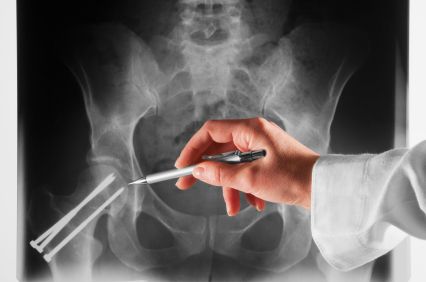Article
Study Finds Global Hip Fractures Expected to Double by 2050

Data from a new study is sounding the alarm on trends in the trajectory of hip fracture incidence among the general population.
Presented at the American Society of Bone and Mineral Research (ASBMR) 2022 Annual Meeting, results of the study, which was conducted by investigators at the University of Hong Kong, suggest the number of annual hip fractures are expected to nearly double worldwide by 2050 compared to the 2018 rate, with the largest proportional increase seen among men.
"Our study also showed that the use of anti-osteoporosis medications following a hip fracture is lower in men than in women by 30% to 67%,” said lead investigator Ching-lung Cheung, Associate Professor, in the University of Hong Kong’s Department of Pharmacology and Pharmacy, in a statement. "Thus, more attention should be paid to preventing and treating hip fractures in men."
Despite the increased risk of mortality and morbidity associated with hip fractures, fracture prevention and osteoporosis remain among the most overlooked adverse events among an aging population. With this in mind, Cheung and a team of colleagues designed the present study as a multinational real-world study using data from 19 countries and a common data model to assess temporal trends in age- and sex-standardized annual incidence of hip fracture to project hip fracture rates through 2050 using predicted population sizes from the World Bank.
For the purpose of analysis, investigators pooled data from patients aged 50 years and older with an admission diagnosis of hip fracture from 2005-2018. Investigators aimed their analyses at determining the age- and sex-standardized annual incidence of hip fracture, mortality, and pharmacological treatment rates within 12 months. The primary outcomes of interest were hip fracture counts by 2030 and 2050. Of note, the 19 countries included in the study included representation from Oceania, Asia, North and Western Europe, North America, and South America.
Upon analysis, investigators found the global age- and sex-standardized incidence of hip fracture was estimated to be 202 per 100,000 individuals, with greater rates observed among women (267 per 100,000 individuals) than their male counterparts (176 per 100,000 individuals. However, investigators pointed out there was significant variability observed between the countries included in the study. Further analysis suggested the average change in standardized hip fracture incidence varied from -2.8% to +4.4% per year. The greatest declines in fracture incidence were observed in Denmark, Singapore, and Hong Kong which saw annual declines of -2.8%, -2.8%, and -2.4%, respectively. The greatest increases in fracture incidence were observed in Thailand, Netherlands, and South Korea which saw annual increases of 4.4%, 2.1%, and 1.2%, respectively.
Additional analysis indicated use of pharmacological treatment within 12 months of hip fracture ranged from 11.5% to 50.3% among the countries reporting use examined in the study, with annual trends pointing to declines in use among more than half of the countries included. Based on the results of their analyses, investigators purported worldwide hip fracture counts would likely double by 2050 compared to the 2018 figures.
This study, “Global Epidemiology of Hip Fracture – Secular Trends of Incidence, Treatment Rate, and Mortality from 2005 to 2018; A Multinational Real-world Study with Common Data Model,” was [presented at ASBMR 2022.





